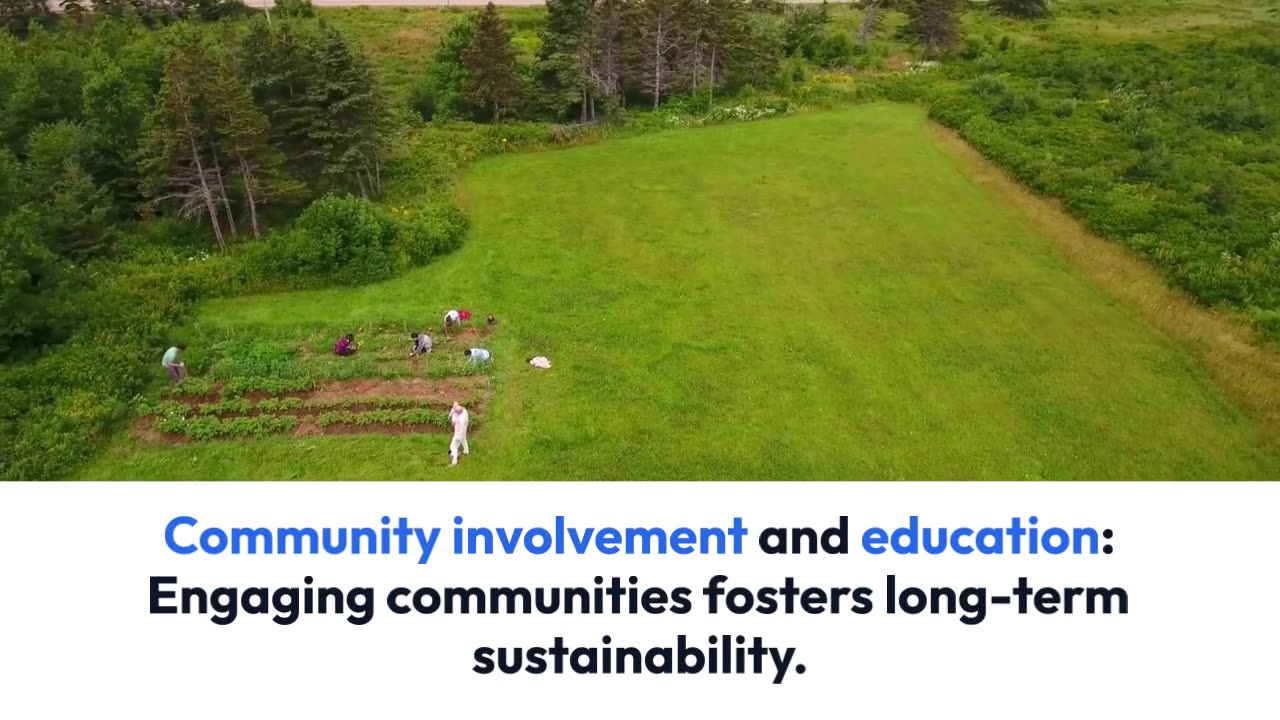Premium Only Content

Urban Horticulture: Greening Cities for a Sustainable Future
Introduction:
Urban horticulture is a dynamic and rapidly growing field that focuses on the cultivation, management, and utilization of plants in urban environments. As cities continue to expand and populations grow, the importance of integrating green spaces and nature into urban landscapes becomes paramount. Urban horticulture plays a vital role in improving the quality of urban life, enhancing the environment, and promoting sustainable development. In this article, we will explore the significance of urban horticulture and how it contributes to creating healthier, greener, and more sustainable cities.
Benefits of Urban Horticulture:
Improving air quality: Urban plants act as natural air filters, removing pollutants and particulate matter from the atmosphere, thus improving air quality and reducing the risk of respiratory diseases.
Mitigating urban heat island effect: Vegetation in cities helps to lower temperatures by providing shade, reducing heat absorption, and promoting evaporative cooling.
Enhancing biodiversity: Urban green spaces serve as habitats for a wide range of plant and animal species, contributing to urban biodiversity conservation and ecological balance.
Promoting mental and physical well-being: Access to green spaces and nature has been linked to reduced stress, improved mental health, increased physical activity, and overall well-being.
Supporting food security: Urban horticulture enables the cultivation of fresh fruits, vegetables, and herbs within cities, enhancing food security and promoting local and sustainable food production.
Fostering community engagement: Urban gardens and green spaces bring people together, fostering community engagement, social interactions, and a sense of belonging.
Types of Urban Horticulture:
Rooftop gardens: Utilizing rooftops for growing plants, rooftop gardens provide numerous benefits such as insulation, stormwater management, and aesthetic appeal.
Community gardens: These shared spaces allow individuals or groups to grow their own food, promote social connections, and educate communities about sustainable gardening practices.
Vertical gardens: Also known as living walls or green facades, vertical gardens maximize limited space by growing plants vertically on walls or structures, adding greenery to urban areas.
Indoor gardening: With the rise of urban living, indoor gardening, including houseplants, vertical hydroponics, and indoor vertical gardens, allows people to bring nature into their homes and workspaces.
Urban orchards: Cultivating fruit trees in urban areas provides opportunities for fresh produce, community involvement, and greening vacant lots.
Green infrastructure: Incorporating vegetation into urban infrastructure, such as green roofs, bioswales, and permeable pavements, helps manage stormwater, reduce runoff, and improve urban ecology.
Challenges and Solutions:
Limited space: Urban areas often face space constraints, but creative solutions like vertical gardening, rooftop gardens, and compact plant varieties can maximize available space.
Soil quality and contamination: Urban soils may be polluted or lack nutrients. Soil testing, remediation, and the use of raised beds or container gardening can overcome these challenges.
Water availability: Urban horticulture requires water-efficient practices such as drip irrigation, rainwater harvesting, and using recycled water to address water scarcity in cities.
Community involvement and education: Engaging communities through educational programs, workshops, and collaboration fosters a sense of ownership, knowledge sharing, and long-term sustainability of urban horticultural projects.
Conclusion:
Urban horticulture is a powerful tool for transforming cities into vibrant, sustainable, and livable spaces. By integrating plants and green spaces into urban environments, we can mitigate environmental challenges, enhance human well-being, and create more resilient communities. Whether through rooftop gardens, community-led initiatives, or innovative green infrastructure, urban horticulture has the potential to shape the future of cities and promote a harmonious relationship between nature and urban life. Embracing urban horticulture is not only an investment in the present but also a commitment to a sustainable and greener future for generations to come.
-
 10:09:48
10:09:48
SpartakusLIVE
14 hours ago#1 Saturday Spartoons
164K3 -
 58:56
58:56
The Connect: With Johnny Mitchell
17 hours ago $21.56 earnedA Migrant Smuggler Reveals How Cartel Trafficking Works, WARNS Of Conditions At The Border
60K26 -
 2:24:56
2:24:56
The Quartering
11 hours agoThe Final Boss! Expedition 33
77.7K4 -
 24:31
24:31
Liberty Hangout
5 days agoDeranged Democrats Go Insane
81.4K215 -
 11:43:10
11:43:10
FusedAegisTV
1 day agoOFFICIAL Evo 2025 Day 2 Co-Stream - Las Vegas, NV ∥ 14,000+ Entrants! & Top 24s
114K2 -
 12:08
12:08
Exploring With Nug
20 hours ago $12.86 earnedWe Found a Hoarder’s Houseboat While Magnet Fishing a River in Louisiana!
69.4K13 -
 LIVE
LIVE
Lofi Girl
2 years agoSynthwave Radio 🌌 - beats to chill/game to
270 watching -
 58:42
58:42
X22 Report
19 hours agoAmerica’s Back, Those Who Tried To Destroy American Will Face Justice - Ep 1
282K145 -
 5:38:49
5:38:49
Eternal_Spartan
10 hours agoPEAK: Collab w/ TheBeardedNerdd | USMC Vet | Come Join the Best Chat on Rumble! (!Shoutouts)
30.5K6 -
 4:20:20
4:20:20
Midnight In The Mountains
12 hours agoMidnight In The Mountains | Episode 7 | Feat: RCAM & JoeJoeGunz | Shadows - Light and Salvation
21.7K4